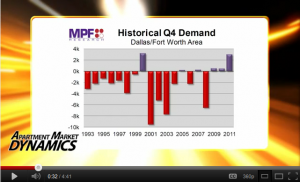Nice article in MHN Online, good tips and reminders. There are still plenty of properties worth less than the debt, and there are more foreclosures to come. Most of the distressed multifamily properties are B, C and D class properties. These properties can provide great returns with cap rates from 8 percent to 12 percent on existing income, and in most cases have plenty of vacancy for even more upside.
My top two that apply to all properties distressed or otherwise:
Good management: Distressed B, C and D properties require experienced and diligent asset and property management. Your management team should be top notch. Your turnaround plan should be realistic and properly implemented.
Talented leasing staff: Your leasing team should be properly motivated and for lease marketing extremely thorough. You want a well-thought-out, multi-disciplined lease up plan to stabilize properties in this cycle.
See the article here: http://bit.ly/xW6fZp



